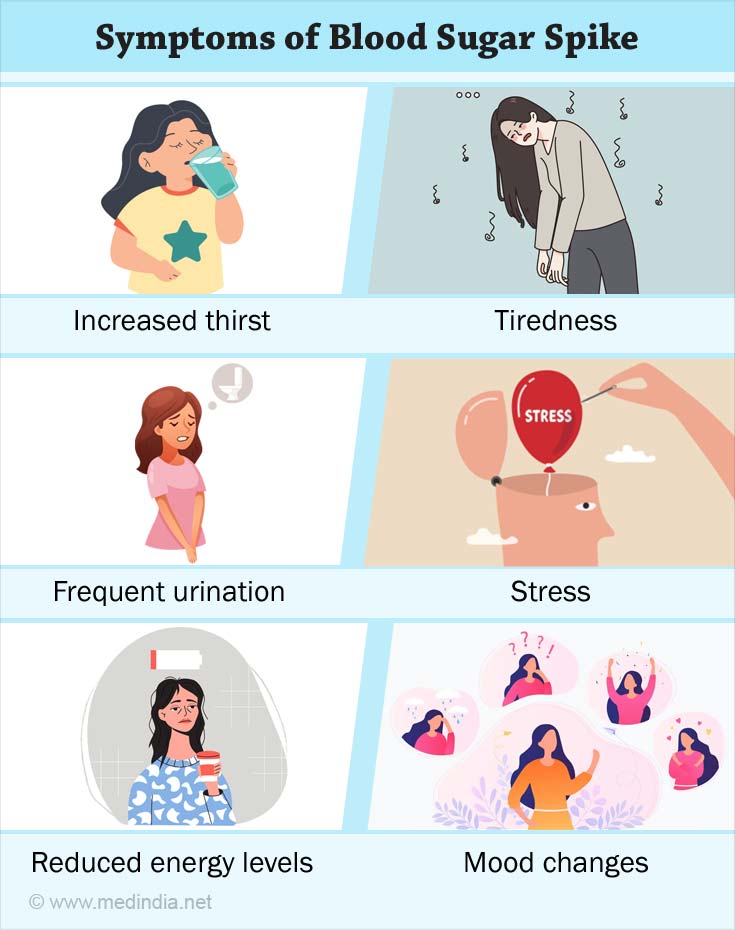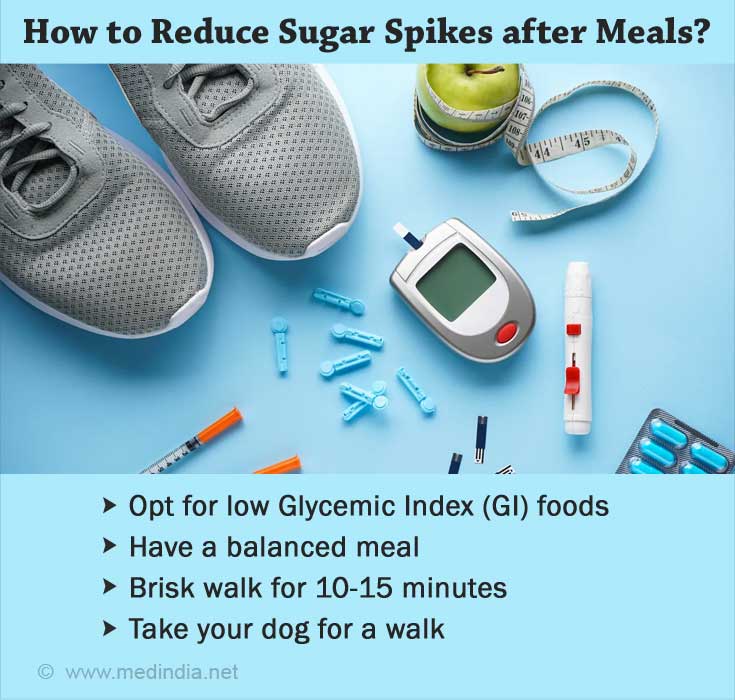- Castro-Acosta, M., Lenihan-Geels, G., Corpe, C., & Hall, W. (2016). Berries and anthocyanins: Promising functional food ingredients with postprandial glycaemia-lowering effects. Proceedings of the Nutrition Society,75(3), 342-355. - (https://doi.org/10.1017/S0029665116000240)
- Those bothersome blood sugar spikes after meals - (https://www.knowdiabetes.org.uk/blog/those-bothersome-blood-sugar-spikes-after-meals/#:~:text=Why%20do%20people%20get%20blood,working%20to%20lower%20the%20spike.)
- Strike the Spike: Controlling Blood Sugars After Eating - (https://tcoyd.org/2019/10/strike-the-spike-controlling-blood-sugars-after-eatin/)
- Johnston, C. S., & Buller, A. J. (2005). Vinegar and peanut products as complementary foods to reduce postprandial glycemia.Journal of the American Dietetic Association,105(12), 1939-1942.
- Grom, L. C., Coutinho, N. M., Guimarães, J. T., Balthazar, C. F., Silva, R., Rocha, R. S., ... & Cruz, A. G. (2020). Probiotic dairy foods and postprandial glycemia: A mini-review.Trends in Food Science & Technology,101, 165-171.
- McMacken, M., & Shah, S. (2017). A plant-based diet for the prevention and treatment of type 2 diabetes.Journal of Geriatric Cardiology: JGC,14(5), 342-354. - (https://doi.org/10.11909/j.issn.1671-5411.2017.05.009)
- Buyken, A.E., Mitchell, P., Ceriello, A.,&Brand-Miller,J.(2010). Optimal dietary approaches for prevention of type 2 diabetes: A life-course erspective.Diabetologia, 53,406-418. - (https://doi.org/10.1007/s00125-009-1629-8)
- O'Keefe, J. H., Gheewala, N. M., &O'Keefe, J.O. (2008). Dietary strategies for improving post-prandial glucose, lipids, inflammation, and cardiovascular health. Journal of Geriatric Cardiology: JGC, 51(3), 249-255. - (https://doi.org/10.1016/j.jacc.2007.10.016. PMID: 18206731.)
- Neelakantan, N., Narayanan, M., de Souza, R.J.,&van Dam, R.M. (2014). Effect of fenugreek (Trigonella foenum-graecumL.) intake on glycemia: A meta-analysis of clinical trials.Nutrition Journal,13,7. - (https://doi.org/10.1186/1475-2891-13-7)
What are Blood Sugar Spikes?
Blood sugar spikes occur when the blood sugar levels are on a higher side temporarily after meals. It is normal for blood glucose levels to rise after meals, but levels on an above-normal level frequently occurring can be dangerous. This may carve the way to many health complications like increased risk for cardiovascular disease, kidney disease, and may also affect vision health.
What are the Symptoms of Blood Sugar Spike?

- Increased thirst
- Tiredness
- Frequent urination
- Stress
- Reduced energy levels
- Inability to think with clarity
- Inability to perform physical tasks
- Mood changes
Which Foods Increase Sugar Spikes?
Foods with a high glycemic index (GI) like white bread, rice, breakfast cereal, and sugary foods can cause a spurt in blood sugar levels. Foods that are overripe and over-cooked, foods low in fiber and liquid consistency may increase glucose concentration in the blood.
Some of the foods that should be restricted to avoid postprandial hyperglycemia are cornflakes, instant oatmeal/rice/short-grain rice, white bread, processed breakfast cereals, muffin, and bagel, starchy vegetables like potatoes, canned vegetables, cakes, cookies, crackers, sweetened beverages like soft drinks, sports drinks, and candies.
What can I do to Reduce Sugar Spikes After Meals?
The five simple ways to scroll down the incidence of post-meal blood sugar spikes are discussed below:

- Opt for low Glycemic Index (GI) foods: Foods with a low GI do not raise the blood sugar after eating. Some low GI foods are oats, wheat, whole grain pasta, green leafy vegetables, legumes, and many more. Choosing foods that are high in fiber and are unprocessed can be helpful.
- Balanced meal plate: Right way of plating the meals will keep the sugar levels after meals in check. A balanced meal plate should have the macronutrients— protein (chicken, egg, paneer), carbohydrates (vegetables, whole grains), and fat (nuts, seeds, oils) in the right proportions. Take advantage of the vegetables and consume them first to prevent insulin spikes. Splitting up meals is also an effective method.
- Post-meal activities: Going for a brisk walk post-meal for about 10 to 15 minutes can control the blood sugar levels after-meal and support digestion. Other activities that can be performed after eating are doing household chores, walking the dog, or walking to nearby stores.
- Right usage of insulin: People with diabetes who use insulin for their diabetes managementshould be aware of the right way of injecting insulin and using them at the right time.
- Prevent hypoglycemia:A low blood sugar level before meals can cause the food to digest fast, paving the way to sugar spikes after meals.
How to Prevent Insulin Spike After Meals?
Consuming a balanced meal containing protein, carbohydrates, and fat will prevent insulin spikes. Insulin levels may rise among individuals with insulin resistance to regulate sugar spikes after eating.
Consuming plant-based foods have been shown to alleviate insulin resistance. Whole grains, legumes, and fiber-rich foods like fruits, vegetables, and nuts should be considered on the menu. Minimizing the intake of processed foods and maximizing the intake of plant-based foods that are high in antioxidants, fiber, and other vital nutrients may prevent insulin spikes after eating.
A sedentary lifestyle will ignite spikes in insulin levels after meal consumption to promote glucose homeostasis. Being physically active and engaging in the regular exercise and the right food choice will prevent insulin spikes.
What are the Foods that Lower Blood Sugar?
Several foods have been studied to improve blood glucose levels, but it is important to note that the quantity of food consumed should also be monitored. Though some foods may be low in glycemic index, consuming them in large quantities will negatively affect blood glucose levels.

Consumption of berries can potentially aid in reducing postprandial blood sugar and insulin levels. The anthocyanins in berries inhibit the digestion of carbohydrates and glucose uptake into blood circulation.
Nuts have a beneficial role in reducing blood sugar after meals. Switching refined carbohydrates with nuts will promote glycemic control. Studies showed that consuming almonds, peanuts, or pistachios and high carbohydrate and high glycemic index foods curtail post-meal glucose spikes.
Another study found that consuming vinegar after a high glycemic load meal reduces postprandial glycemia by approximately 55%. The acetic acid in vinegar aids in delaying gastric emptying and inhibits carbohydrate absorption. Also, by adding 1 to 2 tablespoons of vinegar to white rice or white bread, post-meal glucose can be reduced by 25% to 35%, and also promotes satiety.
Probiotic dairy foods exhibit regulatory effects on blood glucose levels after food intake. Fermented dairy products like yogurt, curd, ripened cheeses, and milk beverages that contain whey and probiotic strains are some probiotic dairy foods that exhibit favorable effects. These foods inhibit digestive enzymes such as glucosidase and alpha-amylase, thereby aiding postprandial glucose control.
Fenugreek seeds greatly help in managing blood glucose levels. Fenugreek, being rich in soluble fiber, slows down digestion and reduces carbohydrate absorption from the food.
Proteins of high biological value have favorable effects on the blood glucose profile. Consuming high biological value proteins like skinless poultry, fish, egg whites, and breast meat aid in controlling post-meal glycemia. A study found that whey protein, when added to a glucose-containing drink, lowered post-meal sugar.
Bottom Line
Apart from individual foods, plating the meals with the right carbohydrates (whole and unprocessed grains, fruits, vegetables, pulses), adequate protein (lean meat, egg, legumes, dairy products), and healthy fats (avocado, olive, plant-based oils, nuts, seeds) will plot the blood glucose graph to homeostasis. Physical activity and healthy eating are simple and effective mantras to reduce blood sugar spikes after meals.






